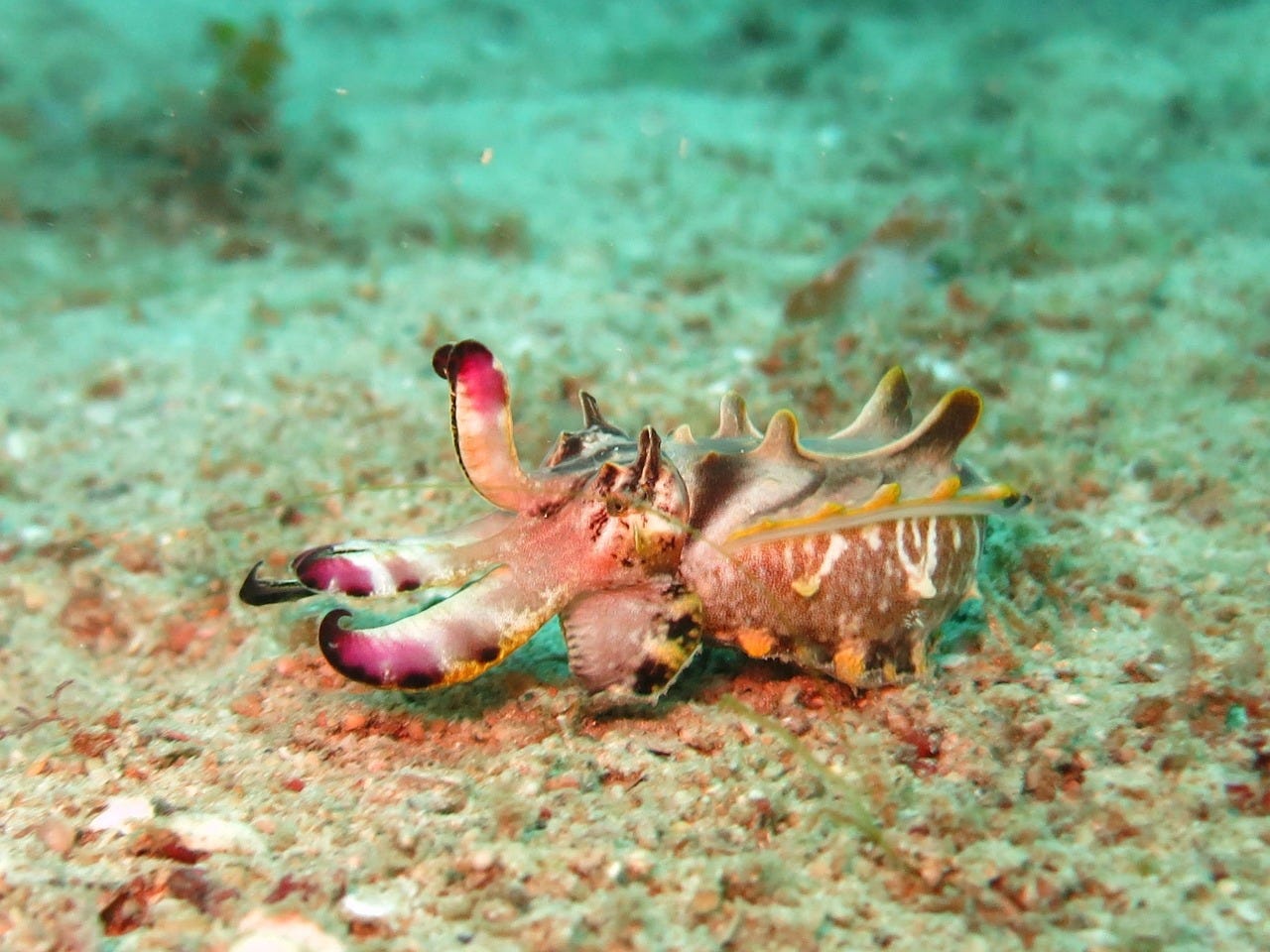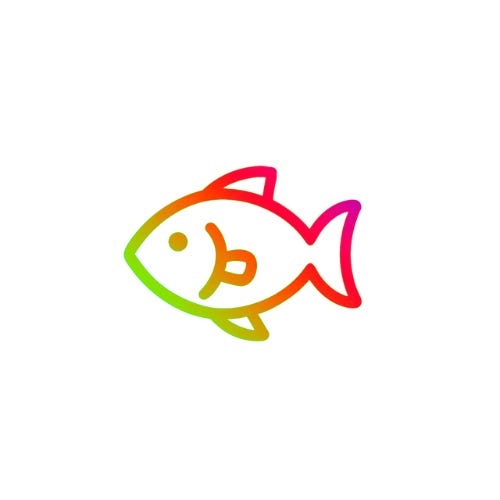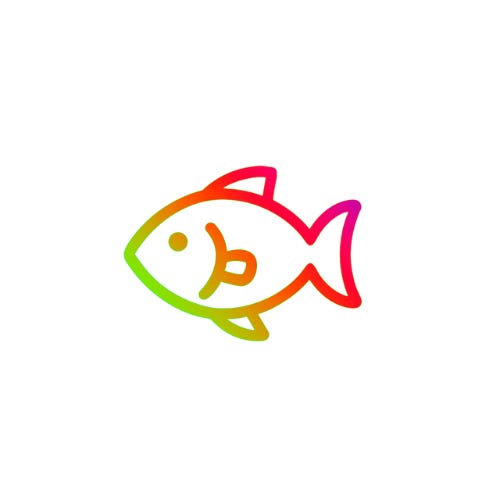AI Evolution: Having the "Backbone" of an Invertebrate
Adaptation in nature happens in the most surprising of ways. We can learn from it.
Bridgework Essay | Words: 795 | Reading time: 4 minutes

Nature’s Masters of Adaptation
An invertebrate is an animal that doesn’t have a backbone or bony skeleton—a group that includes species such as insects, spiders, worms, and jellyfish—and which make up about 97% of all animal species.
The flamboyant cuttlefish? It’s a mini-master of deception. When threatened it can transform within seconds into a pulsing electric yellow, magenta, deep purple and crimson cephalopod, confusing its predators' visual processing systems and buying itself precious time to escape.
But what’s remarkable about the flamboyant cuttlefish (besides its toxicity to humans) is the intelligence behind this display. This little guy possesses no backbone, yet it can coordinate thousands of specialized skin cells with the precision of a symphony conductor, all orchestrated by a brain that evolved along a completely different path than our own.
The Guardian’s Contest: The World’s Favorite Invertebrate
The flamboyant cuttlefish made the shortlist of 10 of the invertebrates chosen by The Guardian’s readers and wildlife writers from more than 2,500 nominations! Although it’s up against some tough contenders, this cephalopod has my vote for its ability to learn, solve problems, and reinvent itself in real-time.
Nominate your invertebrate species of the year before the deadline midday on Friday, April 4.
In this invertebrate's stunning adaptability lies a profound lesson for our approach to artificial intelligence. If a cuttlefish can survive by evolving, so can we—especially as AI forces us to rethink our roles, skills, and ways of working.
The Hidden Backbone of Responsible Change
Many people think that staying the same is safe, but true survival lies in adaptation.
AI is rapidly reshaping industries, job roles, and even creativity. Those who resist change are like rigid, slow-moving creatures—unable to pivot when necessary, vulnerable to obsolescence. But those who learn to adapt intelligently—like the cuttlefish—will thrive in this evolving landscape.
What Does Responsible Change Look Like?
Responsible change isn’t about blindly embracing every new technology or resisting transformation out of fear. It’s about strategic adaptation—knowing when to shift, how to shift, and what values to anchor in place.
✅ Awareness Over Panic. Cuttlefish don’t change color randomly—they assess their environment and react accordingly. Similarly, responsible AI adaptation means staying informed, understanding risks, and making intentional changes rather than reacting impulsively.
✅ Balancing Stability and Flexibility. Change doesn’t mean abandoning everything that works. It means preserving core strengths while evolving in response to new realities. In a workplace setting, this could mean upskilling, refining workflows, or blending AI-driven automation with human creativity.
✅ Ethical Adaptation. AI can optimize processes, but it also raises ethical concerns. Just as the cuttlefish uses its intelligence and agility strategically, we must ensure that AI-driven changes enhance fairness, transparency, and human well-being rather than causing harm.
✅ Experimentation with Guardrails. Cuttlefish test different camouflage techniques in response to threats. Likewise, responsible change involves small-scale experimentation—testing AI tools, refining strategies, and monitoring outcomes before full-scale adoption.
The Cuttlefish Mindset for AI Evolution
Instead of fearing AI, what if we approached it like the cuttlefish approaches survival? Not with rigidity, but with:
🔄 Adaptive Thinking – Reframing AI as a tool for augmentation, not replacement.
💡 Strategic Experimentation – Testing AI applications in controlled ways.
🛡 Ethical Guardrails – Ensuring AI serves people, not just profits.
Just as the cuttlefish thrives by embracing its adaptability, so too can we—if we learn to shift thoughtfully, strategically, and with purpose.
How to Reinvent Like a Cuttlefish
1. Be Feisty, Not Fearful: The cuttlefish doesn’t cower; it captivates. Instead of fearing AI, embrace change with confidence and stand out by adapting strategically.
2. Think Fluidly: Cuttlefish solve problems in real time. In an AI-driven world, rigid thinking leads to stagnation—adopt an agile mindset, continuously learning and evolving.
3. Master Perception & Positioning: The cuttlefish controls outcomes through illusion. Similarly, how you position yourself, tell your story, and navigate AI-driven changes will define your success.
4. Adapt with Intent: The best survivors know when to evolve and when to hold their ground. AI is a tool, not a mandate—choose your transformations wisely.
The Future Belongs to the Adaptable
Are you resisting AI, or leveraging it to amplify your strengths?
What’s one way you can channel the cuttlefish today, engaging with AI responsibly, rather than ignoring or fearing it?
In the AI age, resilience isn’t about rigidity—it’s about transformation. And some of the most adaptable creatures thrive because they move with flexibility.
Additional Resources
Monterey Bay Aquarium (behind the scenes)





